Granny's Soup and Stew Recipes: Comfort in a Bowl
At Channelin' Granny, we understand that soup and stew recipes are not just about nourishing our bodies, but also about feeding our souls. Our journey into the world of soup and stew recipes is guided by a deep respect for culinary traditions from around the world. We believe that every culture has its own unique soup and stew recipes that reflect its history, lifestyle, and values. By exploring these diverse cuisines, we hope to bring you a taste of the world's soup and stew recipes, right in your own kitchen.
Soups and stews are more than just a meal. They are a sensory experience that can take us on a trip down memory lane, wrapping us in a cozy embrace of familiar flavors and a sense of belonging.
Channelin' Granny is your go-to resource for soup and stew recipes that evoke a sense of nostalgia and warmth. We believe that every dish has a story to tell, and we're here to share these stories with you. Our recipes are inspired by traditional cooking methods and ingredients, bringing you the authentic taste of home-cooked meals. Our recipes are a tribute to the timeless appeal of soup and stew recipes.
-
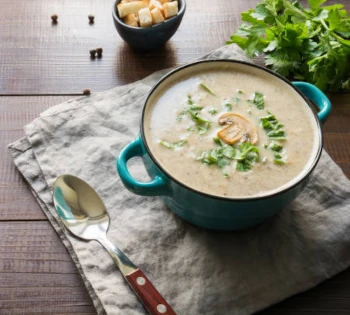
Cream of Mushroom Soup
Experience the rich and creamy flavors of our Cream of Mushroom Soup. This recipe is a delightful blend of earthy mushrooms and heavy cream that will leave you craving for more.
-
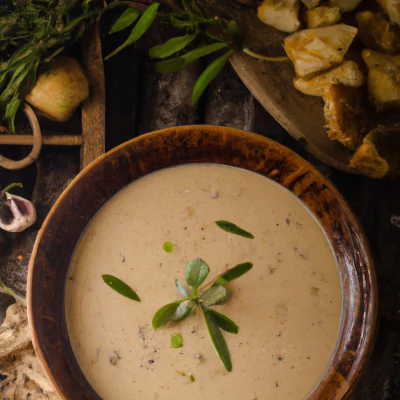
Hearty Potato Soup
This recipe is a tasty blend of potatoes, bacon, cheese, and your favorite toppings that will leave you craving for more. It's a comforting classic, perfect for a cozy dinner at home.
-
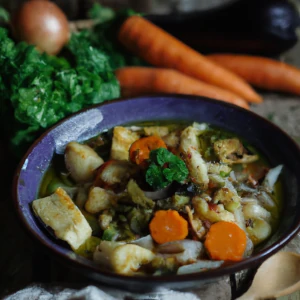
Vegetable Stew with Dumplings
This Vegetable Stew with Dumplings is a hearty and nutritious meal, perfect for dinner. Made with fresh vegetables, herbs, and a touch of tamari for a savory kick.
-
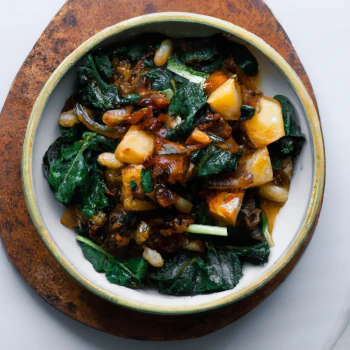
African Vegetable Stew
Embark on a culinary journey with this African Vegetable Stew, a dish that brims with robust flavors and nutritious ingredients. Crafted with an array of fresh vegetables, protein-rich garbanzo beans, and a hint of Tabasco for that extra zing.
Soup and Stew Cooking Tips and Tricks
The Base
The base is arguably the most critical part of the soup or stew, and achieving a rich, flavorful base is the goal of every cook. For a traditional vegetable-based soup or stew, the secret to this is using fresh ingredients. The vegetables, in particular, should be fresh, and some cooks even recommend using organic produce for the best flavor. The water or broth you use should also be of high quality. When you mix the vegetables with the broth, they should simmer until they are tender. These tender vegetables create a rich flavor as the soup or stew cooks. Granny's Cream of Mushroom Soup isn't nearly as fussy. Her secret ingredient is a splash of cream to make the soup even richer. It's also important not to overcook the vegetables. Overcooking can lead to a loss of nutrients and flavor.
The Ingredients
The ingredients are where you can get creative with your soup or stew. For vegetable soups, adding a bit of lemon juice not only helps maintain the color of the vegetables but also balances the sweetness of the soup with a bit of acidity. For meaty stews, it's crucial to make sure your meat is well-seasoned and tender. Too much liquid in the stew can make it too thin. You can prevent this by reducing the stew to your desired consistency, or adding a thickener like flour or cornstarch.
Cooking
The placement of your pot on the stove can significantly affect how your soup or stew cooks. Placing your pot on medium heat helps the ingredients cook evenly, preventing them from becoming overcooked. If your soup or stew is boiling too vigorously, you can lower the heat for the remainder of the cooking time.
Cooling
It might be tempting to serve your soup or stew as soon as it's done cooking, but patience is key here. Allowing your soup or stew to cool for a few minutes before serving gives the flavors time to meld together. This is especially important for soups and stews with a lot of ingredients, which need time to harmonize their flavors. Even for simple soups, cooling allows the flavors to deepen so they're more robust when you serve the dish.
Extra Tip - Slow Cooking
If you're making a stew or a soup that requires the ingredients to be cooked for a long time, you'll need to slow cook your dish. This involves adding all your ingredients to the pot, bringing it to a boil, and then reducing the heat to let it simmer for several hours. This ensures your ingredients are fully cooked and the flavors are well-developed. Check out Granny's Vegetable Stew with Dumplings for a great example of a slow-cooked dish.
Remember, practice makes perfect. Don't be discouraged if your first few soups or stews aren't perfect. With each dish you make, you'll learn more about what works and what doesn't, and you'll get better each time. Happy cooking!
-
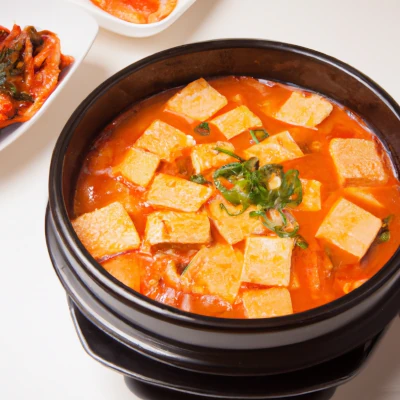
Dwenjang Jjigae - Soybean Paste Stew
South Korea's favorite comfort food is a testament to rich, savory flavors from simple ingredients. This robust and hearty stew has been a beloved staple for centuries, passed down from generation to generation.
-
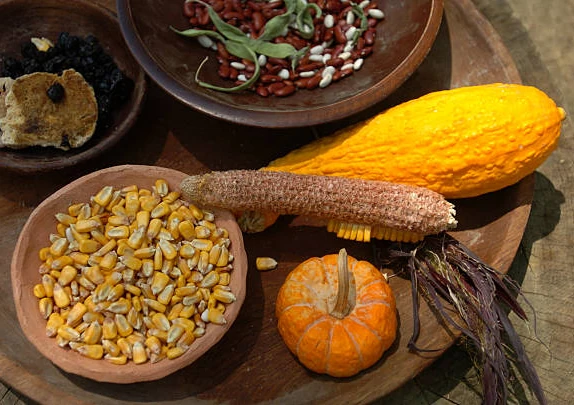
Granny's Three Sisters Stew
Savor the harmony of squash, beans, and corn in Granny's Three Sisters Stew, a traditional Native American dish that celebrates nature's bounty.
-
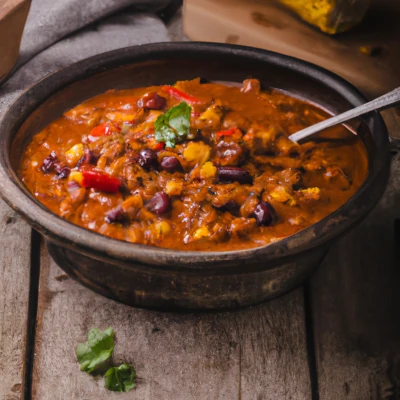
Granny's Classic Chili
Immerse yourself in the warmth and richness of Granny's Classic Chili, a robust blend of ground beef, beans, and spices.
-

New England Clam Chowder
Warm up with Granny's Clam Chowder, a rich and creamy New England classic. This comforting soup is packed with tender clams, hearty potatoes, and savory seasonings in a luscious, creamy broth.
The History of Soup
The history of soups and stews is as rich and varied as the dishes themselves. Originating from the earliest civilizations, these hearty meals have evolved over centuries, influenced by the availability of ingredients, cooking traditions, socio-economic factors, health beliefs, and improvements in cooking equipment.
Soup has a long history, with origins dating back to 20,000 BC in China. The invention of watertight containers made boiling a popular cooking method. Metal and clay containers were used for soup-making from the 10th century onwards. The term "soup" comes from the French word "soupe," meaning "a broth." The word "restaurant" is linked to soup as it was first used to refer to inexpensive and highly concentrated soups sold by street vendors.
Stews, similar to soups, have been a staple in diets across the globe. The Sumerians, an ancient civilization, had a recipe for a meat and vegetable stew that dates back to 6000 BC. Soup was a common food for the poor in ancient Egypt, made with vegetables and barley. The Greeks and Romans also had their versions of soup, often considered food for the lower classes, made with vegetables and legumes.
The Middle Ages saw the rise of thick and hearty stews made with meat, vegetables, and grains. The 19th century brought about the invention of canned soup, popularizing it as a convenient and easy-to-store food. The dish Ramen, which originated in China, was brought to Japan by Chinese traders in the late 19th century and has since become a global phenomenon.
Today, soups and stews continue to be a staple in many cultures worldwide, made with a variety of ingredients and techniques. From the humble chicken noodle soup to the luxurious lobster bisque, these dishes have stood the test of time, providing comfort and nourishment to generations.
-

Dutch Split Pea Soup
Experience the hearty and comforting Dutch Split Pea Soup, a traditional blend of split peas, vegetables, and pork.
-
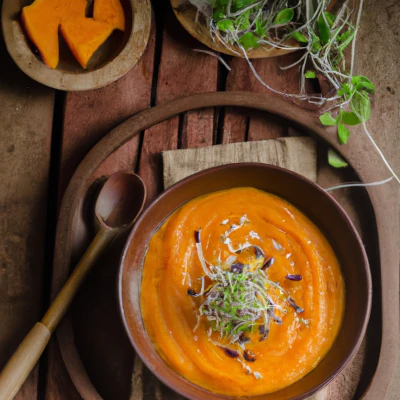
Sweet Potato Soup
Immerse yourself in the warmth of Granny's Sweet Potato Soup, a comforting dish that's perfect for any meal.
-
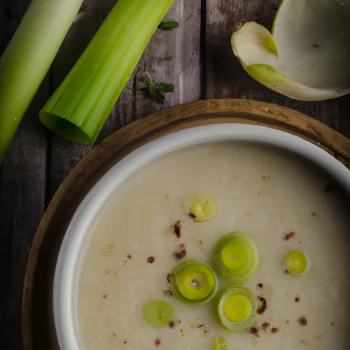
Granny's Potato Leek Soup
Experience the hearty and comforting Granny's Potato Leek Soup, a classic comfort food that's perfect for any meal. This hearty soup features a creamy blend of potatoes and leeks, seasoned with fresh herbs and a touch of cream.
-

Granny's Homestyle Cheese Soup
A rich and creamy cheese soup packed with hearty vegetables and savory ham. This comforting classic brings warmth and nostalgia in every bite.